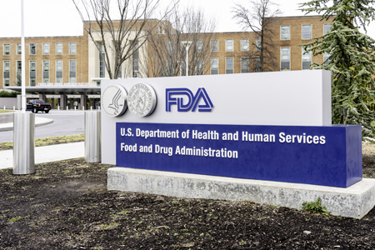FDA Releases Final Guidance On RWD/RWE Submissions For Drugs & Biologics
By Sean Hilscher, vice president, Greenleaf Health

Over the past month, the FDA has continued to build out its real-world evidence program with the release of the final guidance, Submitting Documents Using Real-World Data and Real-World Evidence to FDA for Drug and Biological Products. The brief process-focused guidance describes the recommended approach sponsors should use to identify if and how real-world data (RWD) and real-world evidence (RWE) are incorporated in their regulatory submissions. The FDA notes that this guidance specifically applies to investigational new drug applications (INDs), new drug applications (NDAs), and biologics license applications (BLAs) that contain RWD and RWE. The guidance does not, however, address or comment on review standards for submissions containing RWD or RWE.
Focus On Product Safety And Effectiveness
In this guidance, the FDA signals that its primary focus regarding RWD and RWE is on their use to support product effectiveness and safety. Particularly, the FDA advises that sponsors only flag a submission’s inclusion of RWD and RWE if they are intended to support a regulatory decision on a product’s safety and efficacy. As a rule of thumb, the FDA suggests “sponsors and applicants not identify submissions that contain RWD/RWE if those data are not intended to support product labeling."1 Examples of submission types that do not need to be flagged for incorporating RWD or RWE include those that use RWD to generate hypotheses or studies that include RWD in exploratory models or simulations, studies that use RWD to validate an endpoint, and studies that use RWE to qualify a Drug Development Tool (DDT).
These guiderails will likely have implications for the type of public data that both sponsors and stakeholders will have access to on the use and regulatory acceptance of RWE. The FDA notes that the internal tracking of these submissions is intended to inform the “FDA’s understanding of the scope and use of RWD and RWE submitted to support regulatory decisions…”2 However, this focus likely limits the scope of the FDA’s public reporting of RWE submissions. Under PDUFA VII, the FDA has committed to reporting aggregate and anonymized information on RWE submissions to CDER and CBER starting no later than June 2024. Thus, sponsors and stakeholders can expect the future report to focus only on RWE submissions supporting product labeling rather than other uses.
Key Data Points For Tracking
The sample submission checklist included in the appendix titled Sample Presentation of Information to be Included with Submissions Containing RWD/RWE provides further insight into the data points the FDA is looking to collect on RWD and RWE use. In addition to the product name and targeted disease or medical condition, the FDA suggests sponsors identify their purpose for using RWD or RWE as part of the submission, the study design using RWD to generate RWE, and RWD sources used to generate RWE. Per the sample list of purposes for RWD and RWE, the FDA anticipates the most common uses of RWD and RWE will be:
- to support safety and/or effectiveness for a product not previously approved by the FDA;
- to support labeling changes for an approved product; and
- to support or satisfy a postmarketing requirement or postmarketing commitment (PMR/PMC).
In both the body and appendix of the guidance, the FDA also lists the anticipated study designs likely to involve RWD to support a regulatory approval. The list broadly aligns with the current clinical trial landscape and includes randomized controlled trials with pragmatic elements, single-arm trials using RWD in an external control arm, and non-interventional or observational studies. The FDA is also interested in collecting data on the types of RWD sources sponsors use to generate RWE. The FDA’s sample list of RWD sources, which is not intended to be exhaustive, includes electronic health records data, medical claims data, product or disease registry data, and data collected from digital health technologies in non-research settings.
As noted, the submission checklist included in the appendix is helpful in providing a glimpse into the FDA’s current understanding of the RWE landscape and a preview of the data points the agency is looking to track on RWD and RWE use for regulatory purposes. Just as important, however, are the data points that the FDA did not include in the submission checklist. Notably, the FDA does not request information on the data standard sponsors used to structure large data sets. To date, the agency has remained silent on preferred common data standards. However, per the FDA’s 2021 draft guidance titled Data Standards for Drug and Biological Product Submissions Containing Real-World Data,3 “FDA plans to issue further guidance and/or to update the Catalog with standards for study data that are derived from RWD sources.”4
The guidance was authored by the Office of Medical Policy in the Center for Drug Evaluation and Research (CDER), in consultation with the Center for Biologics Evaluation and Research (CBER) and the Oncology Center of Excellence (OCE). Notably, the Center for Devices and Radiological Health (CDRH) is not listed as a co-author, signaling that the FDA may not be taking an “inter-center” approach to RWE regulatory policy. This is further underscored by the fact that the 2017 guidance on RWE use for medical device applications, Use of Real-World Evidence to Support Regulatory Decision-Making for Medical Devices,5 was authored by only CDRH and CBER, not CDER. As of now, the FDA has not provided recommendations on how to flag device submissions as using or containing RWD or RWE.
References
- FDA, Guidance for Industry, “Submitting Documents Using Real-World Data and Real-World Evidence to FDA for Drug and Biological Products,” September 2022, https://www.fda.gov/regulatory-information/search-fda-guidance-documents/submitting-documents-using-real-world-data-and-real-world-evidence-fda-drug-and-biological-products.
- Ibid.
- https://www.fda.gov/media/153341/download.
- Ibid.
- https://www.fda.gov/regulatory-information/search-fda-guidance-documents/use-real-world-evidence-support-regulatory-decision-making-medical-devices.
About The Author:
 Sean Hilscher is vice president of regulatory policy at Greenleaf Health. He works with clients on a range of regulatory and policy issues, including real-world evidence and digital health. Prior to Greenleaf, he managed a suite of real-world evidence platforms for providers, payers, and life science companies. He has an MBA from Georgetown University and an MA in politics, philosophy, and economics from the University of Oxford.
Sean Hilscher is vice president of regulatory policy at Greenleaf Health. He works with clients on a range of regulatory and policy issues, including real-world evidence and digital health. Prior to Greenleaf, he managed a suite of real-world evidence platforms for providers, payers, and life science companies. He has an MBA from Georgetown University and an MA in politics, philosophy, and economics from the University of Oxford.
